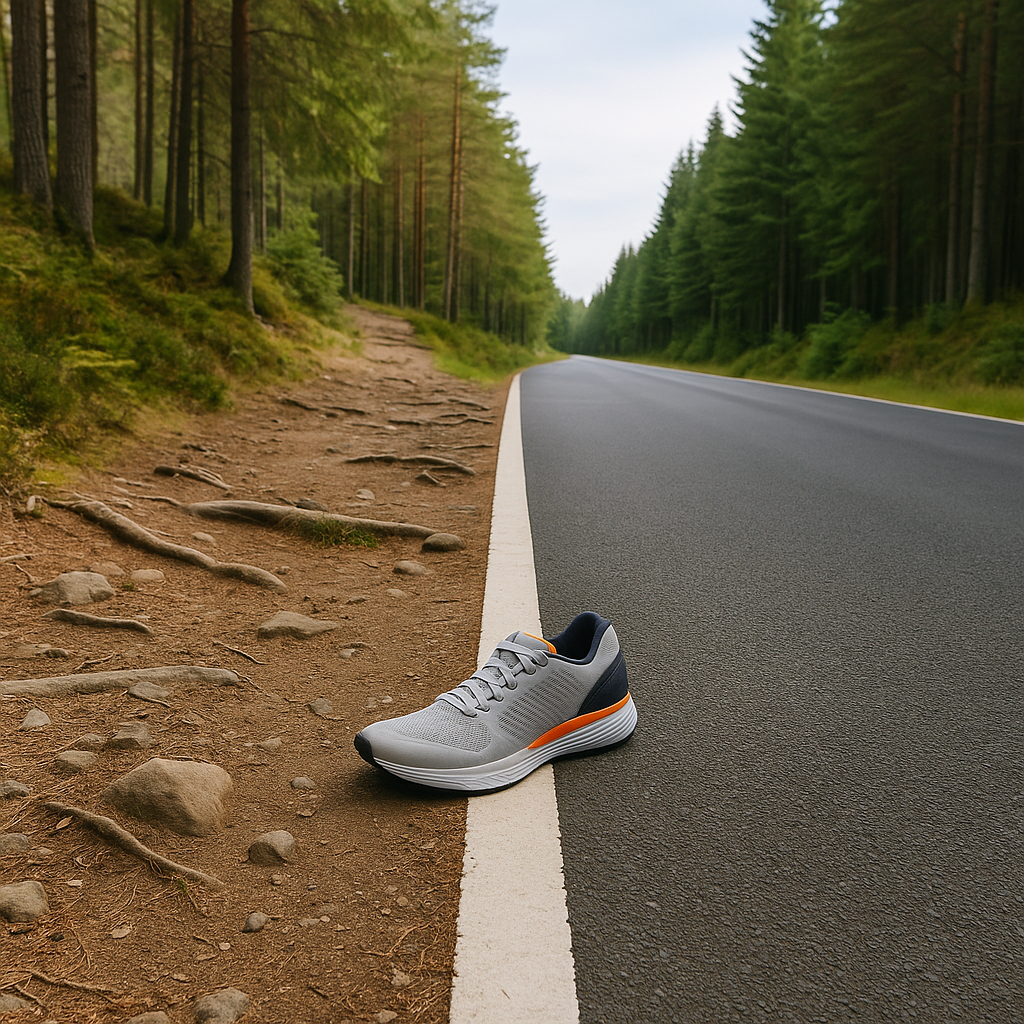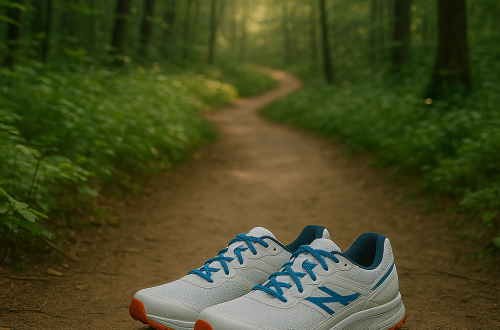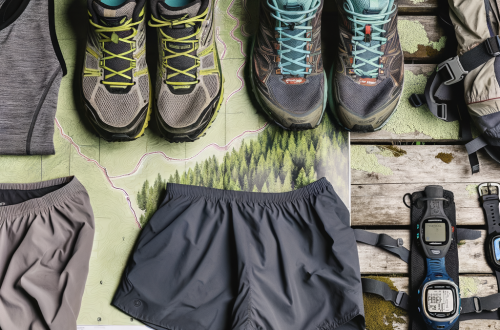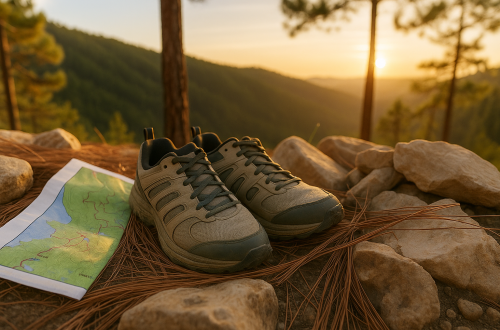
What is trail running and how is it different from road running?
What is Trail Running?
Trail running is a form of running that takes place on natural terrain such as dirt paths, forest trails, mountain tracks, and other off-road surfaces. Unlike road running, which typically occurs on paved streets or sidewalks, trail running immerses you in nature and often involves navigating uneven surfaces, elevation changes, and varying weather conditions.
It’s more than just running off the beaten path — trail running is an experience that combines physical endurance with a deep connection to the outdoors. Whether you’re weaving through wooded trails or ascending rocky hills, each trail run offers a unique adventure.
How is Trail Running Different from Road Running?
While both trail and road running are excellent cardiovascular workouts, they differ in several key ways. Understanding these differences can help you decide which type of running suits your goals and preferences.
1. Terrain
Trail running takes place on natural surfaces like dirt, gravel, grass, and rocky paths. Road running, on the other hand, occurs on smooth, paved surfaces. The uneven terrain of trails requires more balance and agility, engaging different muscle groups than road running.
2. Impact on Joints
Trail surfaces are generally softer than asphalt or concrete, which can reduce the impact on your joints. This makes trail running a good option for those looking to minimize repetitive stress injuries.
3. Elevation and Difficulty
Trail running often includes hills, steep inclines, and descents, making it more physically demanding. Road running typically offers a more consistent elevation profile, making it easier to maintain a steady pace.
4. Pace and Speed
Because of the challenging terrain, trail runners usually run at a slower pace than road runners. The focus is more on endurance and navigation than speed.
5. Gear Requirements
Trail running often requires specialized gear such as trail running shoes with better grip, hydration packs, and weather-appropriate clothing. Road running gear is generally simpler and more minimal.
Benefits of Trail Running
Trail running offers a wide range of physical and mental benefits. Here are some of the most compelling reasons to hit the trails:
- Improved Balance and Coordination: Navigating uneven terrain strengthens stabilizing muscles and enhances proprioception.
- Lower Impact: Softer surfaces reduce stress on joints, helping prevent injuries.
- Mental Clarity: Being in nature can reduce stress, anxiety, and mental fatigue.
- Full-Body Workout: Hills and technical trails engage your core, glutes, and upper body more than flat road running.
- Adventure and Variety: Each trail offers a new challenge, keeping your runs exciting and less monotonous.
Challenges of Trail Running
While trail running has many benefits, it also presents unique challenges that runners should be aware of:
- Navigation: Trails may not be well-marked, increasing the risk of getting lost.
- Weather Dependency: Trails can become muddy or impassable in bad weather.
- Wildlife and Hazards: Encounters with animals, insects, or rough terrain are more common.
- Slower Pace: It can be frustrating for runners used to tracking pace and speed.
- Accessibility: Trails may not be as easily accessible as roads or sidewalks.
Essential Gear for Trail Running
Having the right gear can make your trail running experience safer and more enjoyable. Here’s what you need:
- Trail Running Shoes: Look for shoes with aggressive tread, rock plates, and durable uppers for protection and grip.
- Hydration Pack or Belt: Trails often lack water fountains, so carrying your own hydration is crucial.
- Technical Clothing: Moisture-wicking, quick-drying fabrics are ideal. Consider layers for changing weather conditions.
- GPS Watch or App: Helps track your route and distance, especially on unfamiliar trails.
- Headlamp or Flashlight: Essential for early morning or evening runs.
- First Aid Kit: A small kit with bandages, antiseptic wipes, and blister treatment can be a lifesaver.
Tips for Transitioning from Road to Trail
If you’re a road runner curious about trail running, here are some tips to ease the transition:
- Start Slow: Begin with well-marked, beginner-friendly trails to build confidence.
- Adjust Your Expectations: Don’t focus on pace — trail running is about effort and experience.
- Strengthen Your Ankles: Incorporate balance exercises to prepare for uneven terrain.
- Practice Good Trail Etiquette: Yield to uphill runners and be courteous to hikers and bikers.
- Stay Aware: Keep an eye out for roots, rocks, and other obstacles.
Is Trail Running Right for You?
Trail running is ideal for those who love nature, enjoy variety in their workouts, and are looking for a full-body challenge. It’s also a great way to escape the hustle of urban life and reconnect with the outdoors.
However, if you prefer predictable surfaces, consistent pacing, or live in an area without easy access to trails, road running may be more practical. The good news? You don’t have to choose one over the other. Many runners enjoy a mix of both, depending on their goals and mood.
Frequently Asked Questions
Is trail running harder than road running?
Trail running can be more physically demanding due to elevation changes and uneven terrain. However, it’s often easier on the joints and offers a more immersive experience.
Can beginners start with trail running?
Absolutely. Start with easy trails and gradually build your skills and endurance. Many beginners find trail running more enjoyable and less monotonous than road running.
Do I need special shoes for trail running?
Yes. Trail running shoes offer better grip, protection, and durability for off-road conditions. They’re essential for safety and performance.
How do I find trails near me?
Use apps like AllTrails, Trailforks, or local park websites to discover nearby trails. Running clubs and outdoor groups are also great resources.
Is trail running safe?
Trail running is generally safe if you’re prepared. Always let someone know your route, carry essentials, and be aware of your surroundings.
Conclusion
Whether you’re a seasoned road runner looking for a new challenge or a nature lover seeking a more adventurous workout, trail running offers a rewarding alternative. With the right mindset, gear, and preparation, anyone can enjoy the unique benefits of running off the beaten path.
So lace up your trail shoes, hit the dirt, and discover a whole new world of running.




